
The successful MZ driver from the first years of racing
In the GDR, racing began at the end of the 1940s. Horst Fügner was one of the first drivers in the workers ‘and peasants’ state, who was there from 1950. Thanks to the efforts of engineer Walter Kaaden, a racing version based on the DKW RT 125 was built with the IFA early on, based on the production motorcycle. The abbreviation IFA was the automotive industry association.

The IFA
This was an amalgamation of vehicle manufacturing companies in the GDR. Shortly after the Second World War, the combines were part of an association and were subordinate to the Ministry for general machinery, agricultural machinery and vehicle construction. One of the components of this was the VEB (Volkseigener Betrieb) IFA-Kombinat for two-wheeled vehicles with VEB Simson Suhl, VEB Motorradwerk Zschopau and VEB MIFA Fahrradwerke Sangerhausen. The MZ brand emerged from the Zschopau motorcycle factory in 1956.
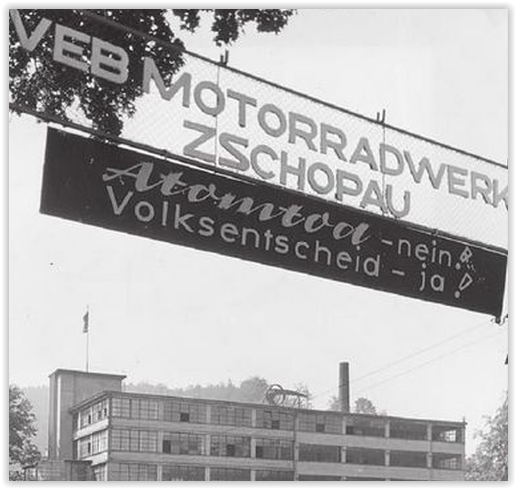
The person of Horst Fügner
Horst Fügner was born on March 11, 1923, in Chemnitz. Young Horst became interested in motorcycles at an early age and listened eagerly to reports on the radio about pre-war races. He had his first driving experiences with a DKW in the Hitler Youth (a political influenced variation of today’s scout movement with an ideological orientation, whose membership was considered mandatory during the Nazi era). During off-road trips, the boys were prepared for their deployment in the army, whereby Fügner’s main focus was probably driving the DKW RT3.
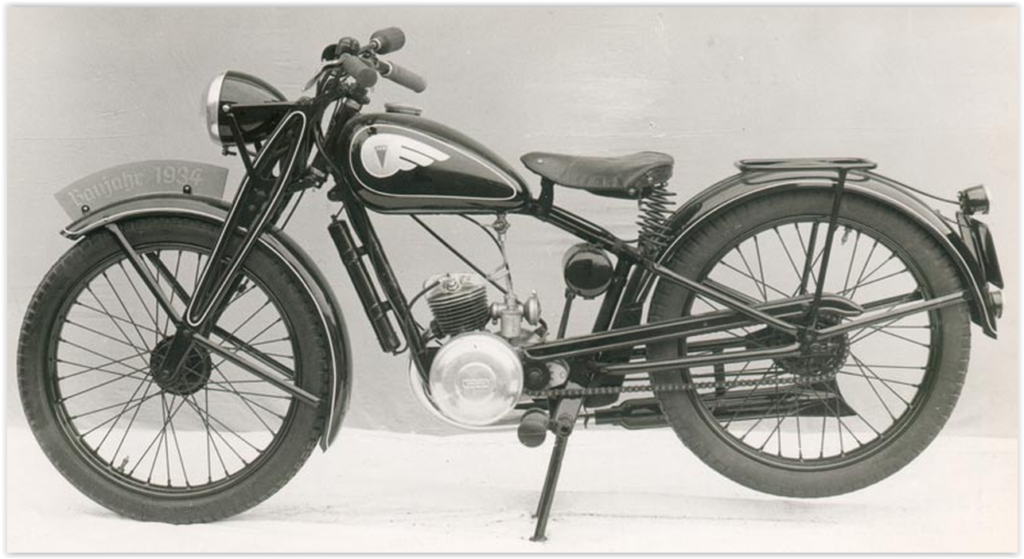
The army years and happy to have survived in the end
He joined the army at the age of 18 and was deployed as a motorcyclist due to his training. Of course, this also brought him into contact with the other Wehrmacht motorcycles. Horst survived the war and was then taken prisoner of war for 3 years. Actually strange in comparison when nowadays, after a few weeks of corona lockdown, people sometimes call themselves prisoners in overreactions. Fügner was in Russian captivity for 3 years with bread and water (where millions of former soldiers died after the war) and was happy to come home alive and in one piece at all.

After regaining freedom, the first racing experiences
As a trained mechanical engineer, Horst Fügner had completed an apprenticeship at Wanderer in Chemnitz before the war. Back in his homeland, he came into contact with motorcycles again early on. For Horst it was now a matter of realizing his dream of racing. With his membership in the Chemnitz motorcycle club, he laid the foundation for this, now all that was left was a racing machine. For this he improvised and he found a DKW RT125, which he built into a racing machine. With the help of parts that were searched from all possible sources, it worked until autumn 1950 to tinker with one’s own racer. With tips for tuning, which he found over the course of the year, the 125cc DKW ran right from the start.
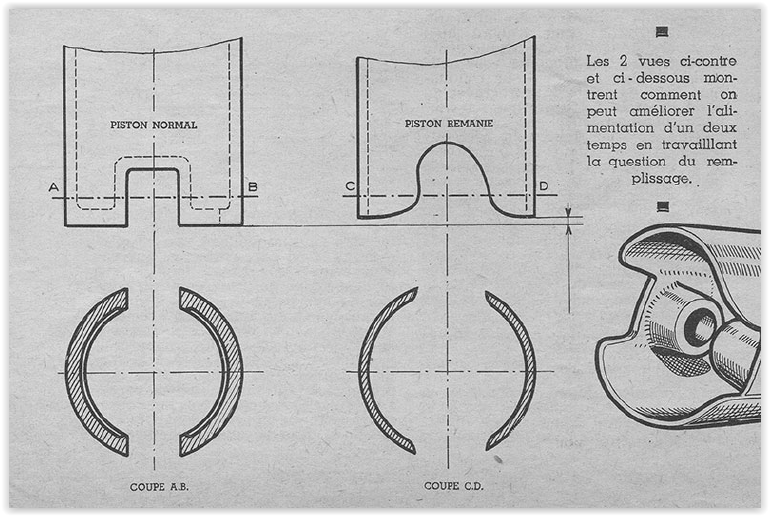
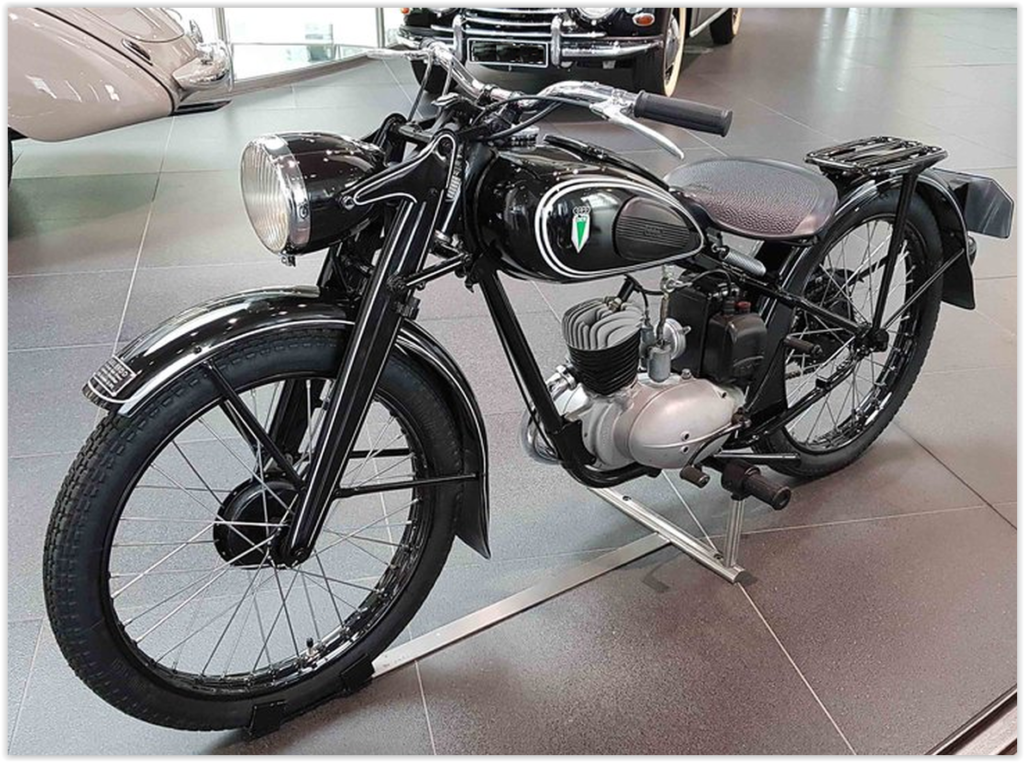
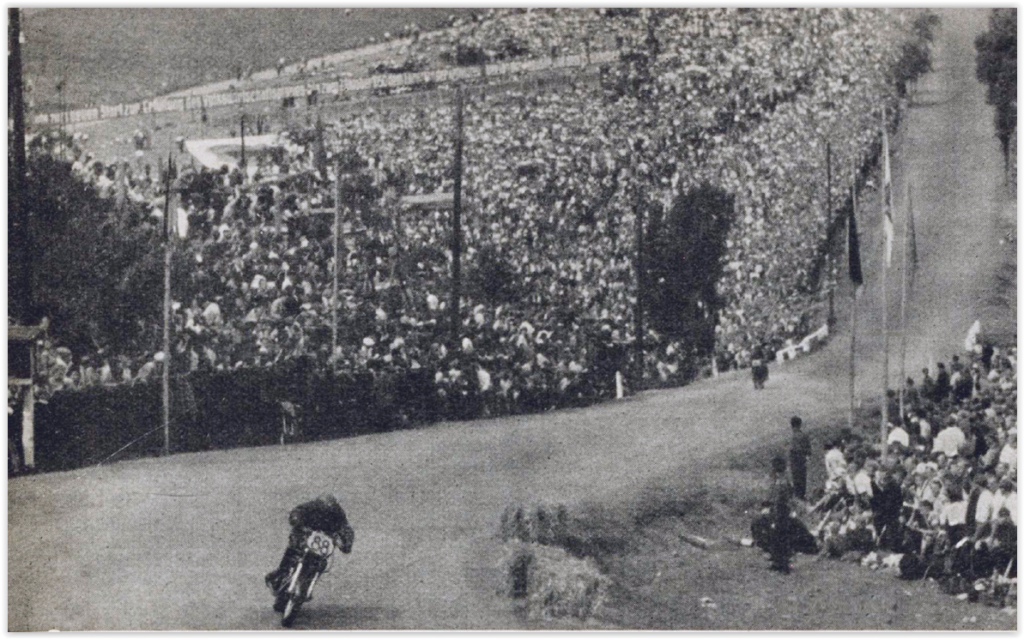
Fügner’s first race
The first race for Fügner took place on October 1, 1950 on the Dessau track, one of the first race tracks in Germany. The street circuit in Saxony-Anhalt was a temporary track that was used for a race for the first time in 1938, before it was over again in 1956. About 70 kilometers north of Leipzig a journey of several hours for the young man from Chemnitz, but it should be worthwhile. The Dessau section of the A9 motorway was planned as the course. The premiere for Horst went according to plan and in the first race he took second place. With a little more luck, the first win would have been possible, but Fügner was anything but dissatisfied.
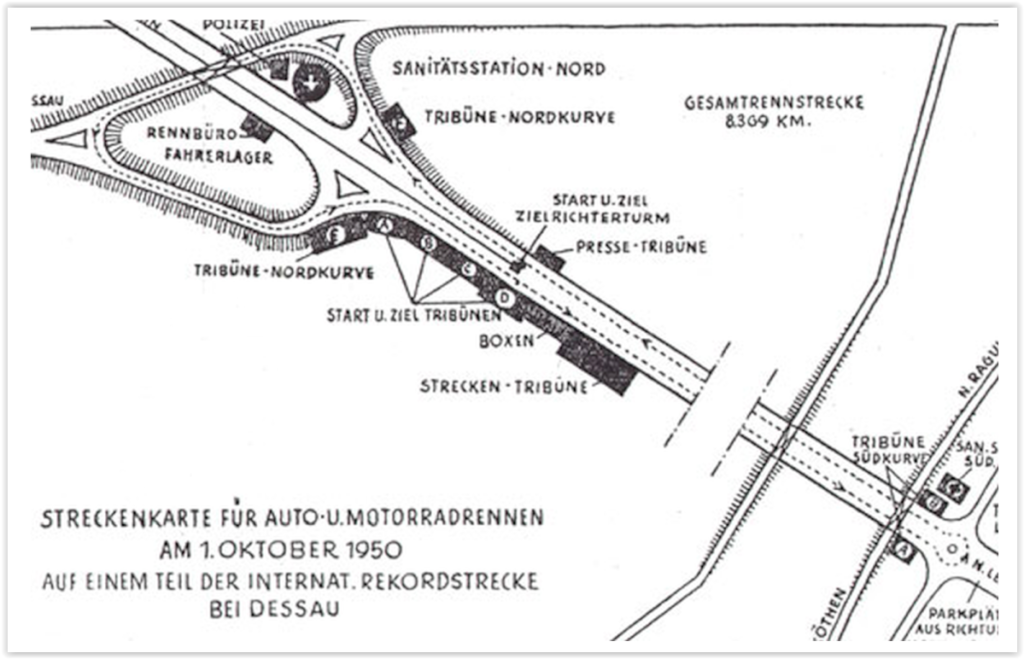
The momentous Leipzig race
Fügner’s next appearance followed at the Leipzig city park race the following year. On May 20, 1951, Horst impressed a senior employee of the IFA works in Zschopau (later MZ) who was present. Horst was out of the race, but apparently his performance was still quite good. Shortly afterwards he was hired by the IFA to compete for the company in future assignments.


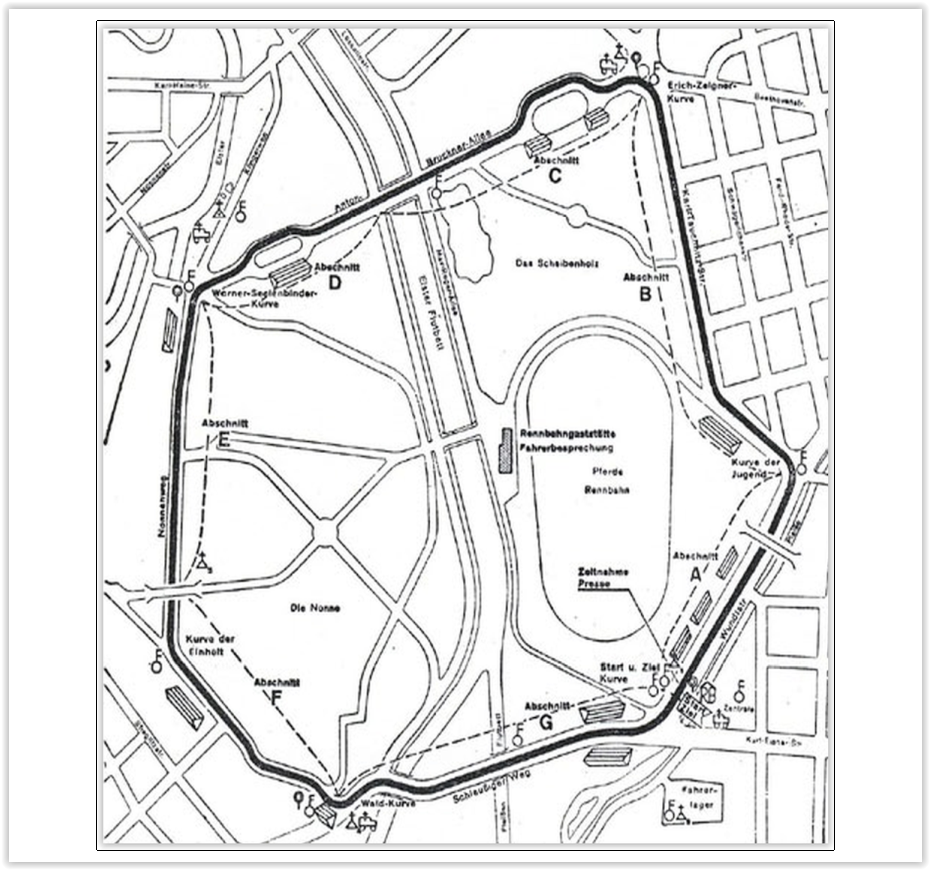
As an employee in the company and test and racing driver
From now on Fügner was a kind of works driver for the brand from Zschopau, later known as MZ, which was to make a name for itself on the racetracks for decades. The Zschopau test manager Kurt Kämpf had thus laid the foundation for Fügner’s IFA career after the race in Leipzig. From now on Horst was part of the Zschopau team, where Walter Kaaden would set up a racing department a short time later. The man from Chemnitz became an employee in Zschopau, as a test fitter and racing driver. This place was to become something of a second home for him for a long time.
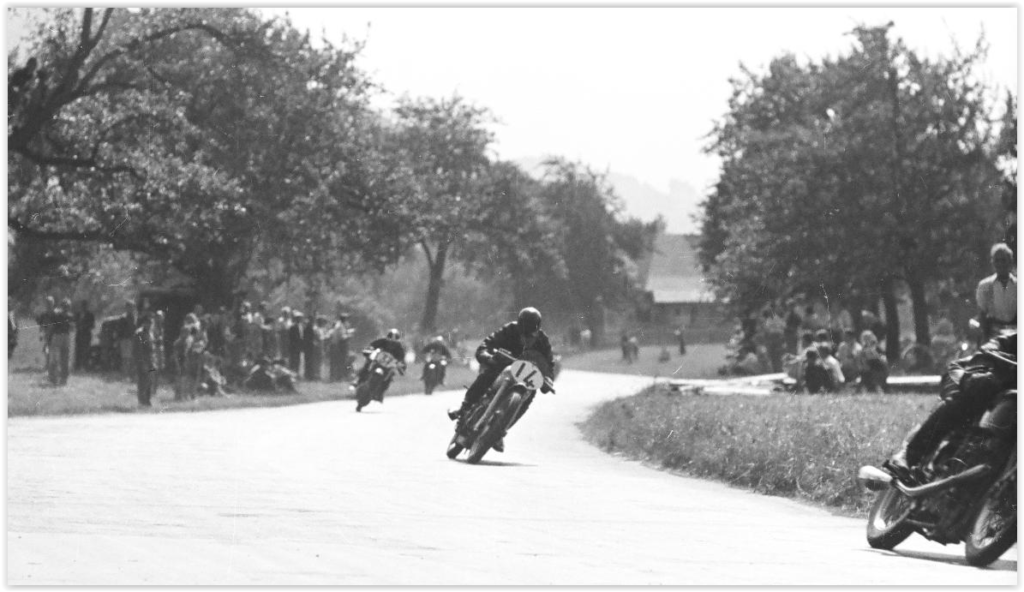
Competition in his own country
A certain Ernst Degner (see our detailed 10-part story about him under “History”) had been determined since 1950 to prove himself on the racetracks in the GDR. In addition to the former DKW works driver Bernhard Petruschke, who was already known in the pre-war era, Degner was also a driver who made a name for himself early on. The two competed on a so-called ZPH 125.


The ZPH
It was a racer based on the DKW RT125, just like at IFA since 1949 and Fügner from autumn 1950. This privately developed bike was built by a talented technician named Daniel Zimmermann with the help of his friend and mechanic Henkel. The first letters of the designer, driver and mechanic therefore also formed the name of the racer, which usually went much faster than the offshoot of the DKW RT125 built by VEB IFA. The main modification of the ZPH engine consisted of the rotary plate valve invented by Zimmermann and even patented in the GDR.
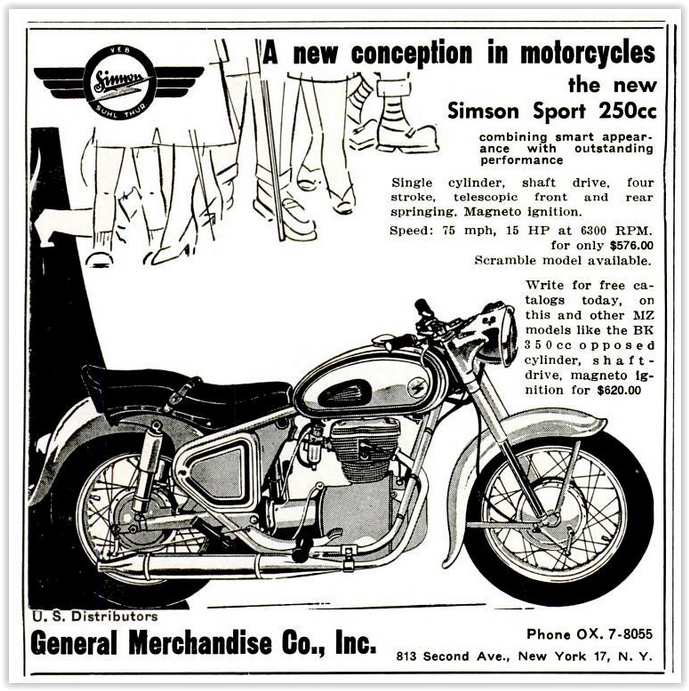
Competition from the west
Of course, there was also very strong competition from the West, especially the drivers who competed in the world championship again from 1952 on for DKW and NSU. In addition to Werner Haas and Hans Baltisberger (see for the story of the two in the separate chapter under “History”), H. P. Müller was one of them. In the short time in which the Neckarsulm company NSU was involved in the World Championship, from 1953 to 1955 there were five world championship titles in the 250 cm³ and 350 cm³ class. Hermann Paul (H. P.) Müller achieved the last of these on an NSU “Rennmax” with a 250 World Championship title.

The first 3 years of the World Championship without Germans
In this context, it is also important that pilots from Germany were only allowed to compete in the motorcycle world championship again from 1952. During this time, IFA and ZPH could of course only get something in the smallest class. The team from Zschopau had been racing again based on the series DKW RT125 as early as 1949. But in the first few years there was no illusion that they could win something internationally.

The first two years with IFA
Due to the fact that the ZPH with Petruschke and Degner was usually faster than Fügner with the IFA, Horst’s successes in the first few years were quite manageable. But again and again he achieved respectable successes, with which he and his team should not be dissatisfied under the given circumstances. The victories at races like Halle-Saale in the first few years (1950 to 1952) went alternately to Erhard Krumpholz (DKW, IFA from autumn) and Bernhard Petruschke (ZPH). The latter even won the GP of Czechoslovakia in Brno, which was not part of the World Cup at the time.

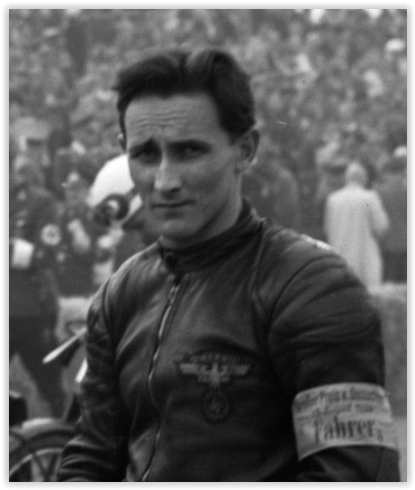
The dominant man up to 125cc at the beginning of the 1950s in the GDR
In 1950, Petruschke, who was born in Kleinmachnow east of Potsdam, also won the Stralsund baths race in the 125cc. This was despite the fact that he had a pretty bad fall in training and started the race with a bandaged knee. Horst Fügner, on the other hand, always managed to put himself in the limelight, but he didn’t make the big breakthrough in the first two years. After all, with a 3rd place behind the West German stars H. P. Müller and Karl Lottes (Mondial) at the Sachsenring at the 125cc IFA, he was able to attract attention.
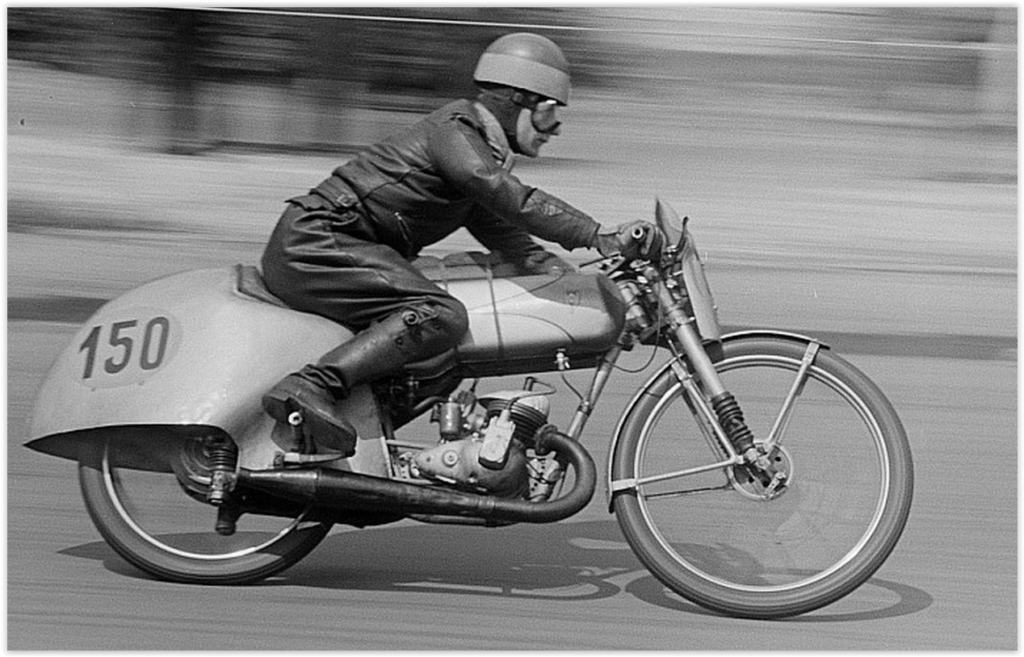
Integration of ZPH into IFA
In Brno Petruschke had already won the 125cc race of 1952 with an IFA, at least his ZPH had been renamed to this name. After he had impressed with strong performances at the ZPH even in the neighboring country, including at the Solitude, the party took hold. The ministry responsible for the vehicle industry and consequently for motorsport had long been a thorn in the side that a private team should win the laurels. On the other hand the products of the nationally owned industry thus regularly dwarfed.


Man and know-how transfer
Under the direction of the East Berlin Minister for Heavy Machinery, Fritz Selbmann, the ZPH was integrated into the IFA in Zschopau. With victories abroad as well, this machine, created on a private initiative, was often unbeatable. Bernhard Petruschke had won in Budapest on July 1, 1951, and has now also been transferred to IFA. The state company people built on their (Daniel Zimmermann’s and Bernhard’s) experience with the machine and as a pilot. Designer Daniel Zimmermann was entrusted with the development and construction of racing boat engines. In January 1953, the management of the IFA racing department was handed over to engineer Walter Kaaden. This was the actual hour of birth of the racing machine that later became world-famous under the name MZ.
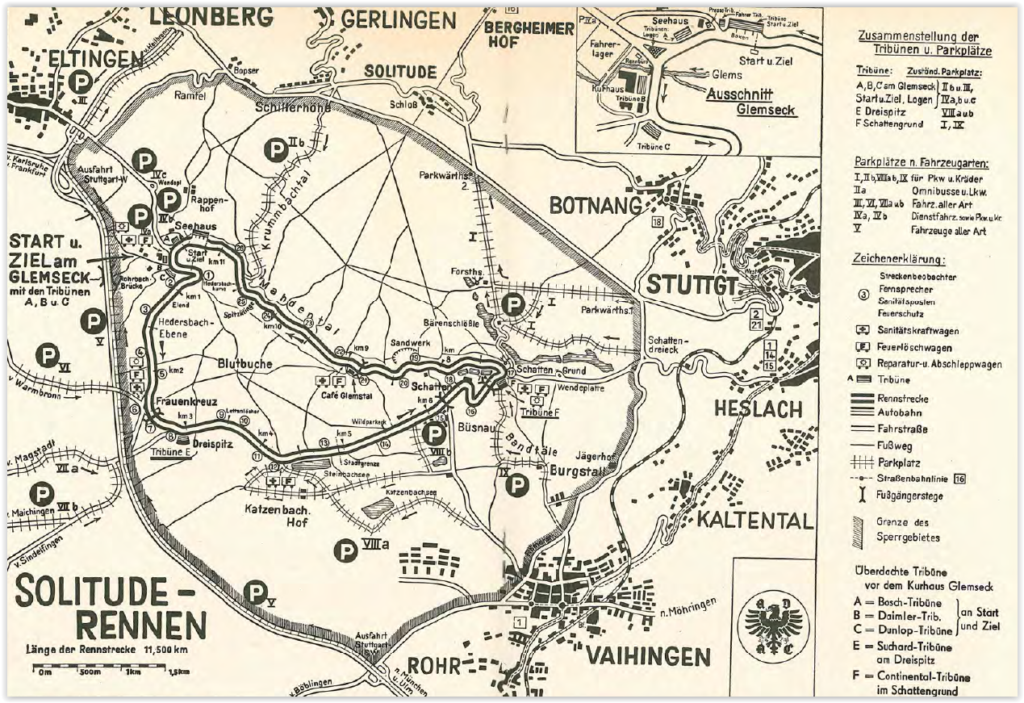
The redesign of a 125cc IFA
Horst Fügner was part of a small, sworn troop, whose everyday business, according to later statements by the popular racing driver, did not neglect the fun. After Walter Kaaden joined the company in winter, his department received the order to build 10 racing machines. In the “Volkseigene Betrieb” (VEB) IFA, this was a very sporty task because the men of the newly established racing department were also involved in the production of the series machines. But they made it at least partially and in the 1953 season the first really self-designed machine was built. It wasn’t just a copy of the ZPH, but a real new development with a square bore and stroke ratio of 54 x 54 mm. The power is said to have been around 12.5 hp at 8,000 rpm. However, initially only 3 machines were finished, which is why Petruschke initially used his ZPH, which had been renamed IFA.

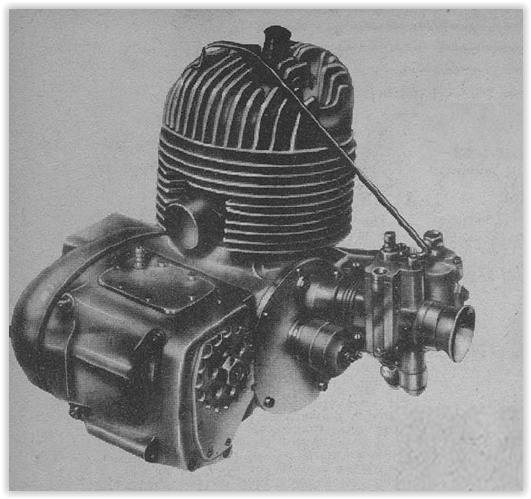
A tough start and the first major successes in 1953
Walter Kaaden was considered a veteran in Zschopau and his commitment should soon show that his choice for IFA should be spot on. His father was a director chauffeur at DKW (later Auto Union) and Walter grew up with the pre-war racing families. Initially, Zschopau was still struggling with teething troubles with the new 125cc series, while Petruschke was able to collect points for the GDR championship with the tried and tested ZPH base at the start of the season. In the end, thanks to his constancy, he was able to secure the title of 125cc master of the GDR. As the titleholder, Bernhard replaced IFA driver Erhart Krumpholz, who held the championship title in 1950 and 1952.
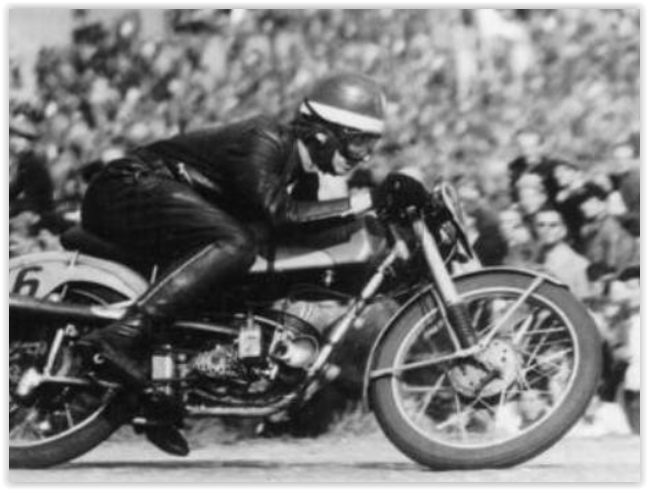

Fügner with the real 125cc IFA and the breakthrough on the Sachsenring
For Horst Fügner and the “real” IFA, however, the big hour came at the Sachsenring of all places. Before Petruschke, Horst won in front of his home crowd on August 23, 1953, thereby fulfilling a long-cherished dream. On Wikipedia this victory is ascribed to Petruschke, but there is even a winning photo with Fügner at the top of the podium, which proves the opposite.

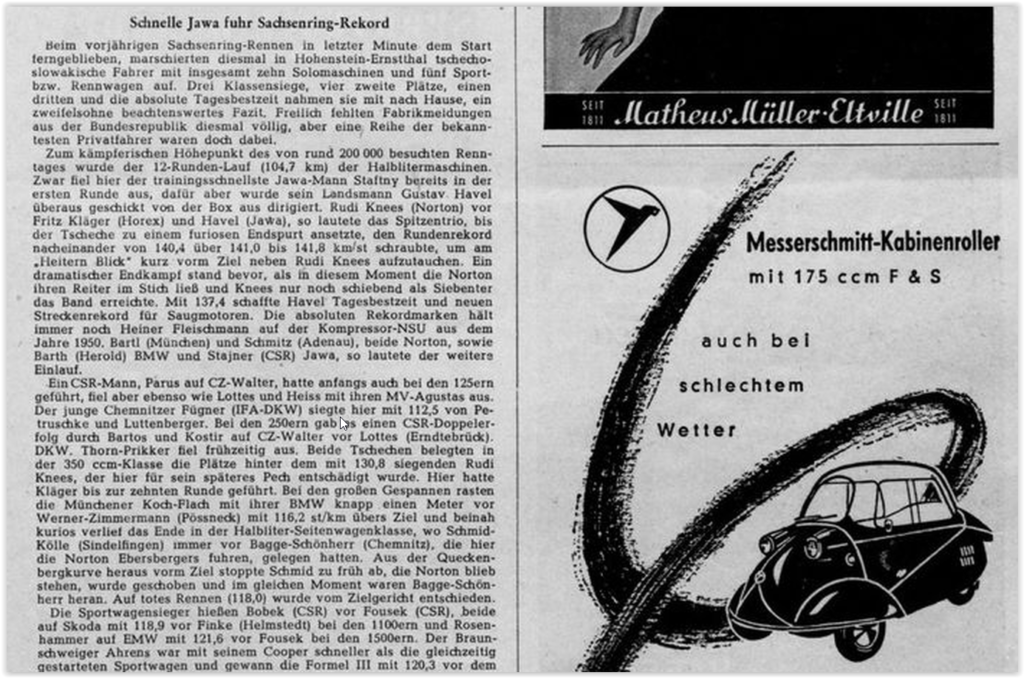

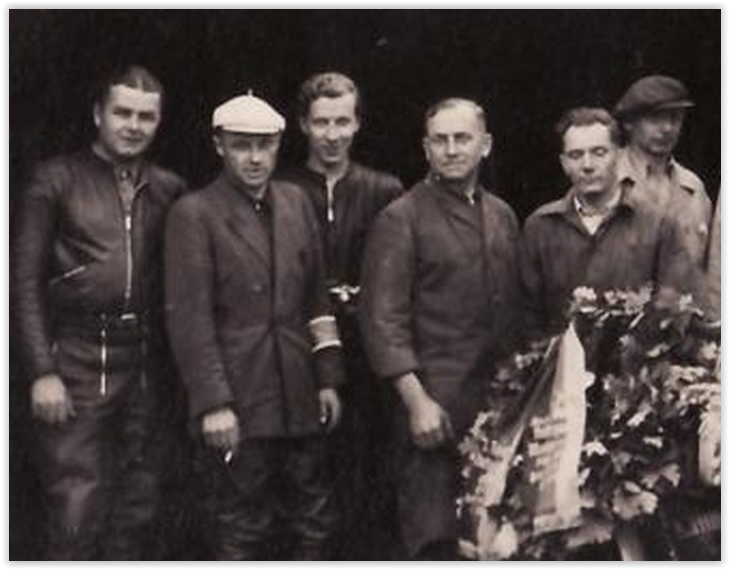
Part 2 coming soon..
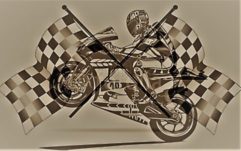
No Comments Yet